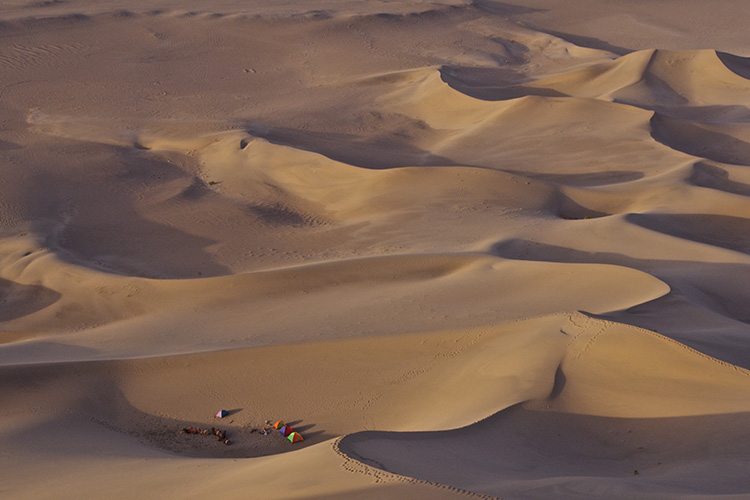
Scientists at Aberystwyth University reveal that massive desert star dunes are much younger than we thought
By
Star dunes, which look like stars when viewed from above, are believed to be the tallest sand dunes on Earth, with one in the Badain Jaran Desert in China reaching 300 metres high. They are widespread in modern deserts, including sand seas in Africa, Arabia, China, and North America, but they have also been found elsewhere in the solar system – on Mars and on Saturn’s moon Titan.
Despite being common today, star dunes have almost never been found in the geological record. Their absence has perplexed scientists as past deserts are a common part of the history of Earth, preserved in rocks deep underground. In a new study, published in the journal Scientific Reports, scientists at Aberystwyth University, Birkbeck and UCL academics calculated the age of one of these mysterious dunes for the first time.
Lala Lallia, meaning ‘highest sacred point’ in the Berber language, is a star dune in the southeast of Morocco. It sits in the Erg Chebbi area of the Sahara Desert close to the border with Algeria, an area featured in TV series like SAS Rogue Heroes and blockbuster films such as The Mummy and Sahara. The researchers found that the oldest parts of the base of the Moroccan dune are 13,000 years old. However, the discovery that it had formed rapidly in the last thousand years surprised scientists who had thought larger dunes were far older.
‘This research is really the case of the missing sand dune – it had been a mystery why we could not see them in the geological record,’ says Geoff Duller, a geography professor at Aberystwyth University. ‘It’s only because of new technology that we can now start to uncover their secrets. These findings will probably surprise a lot of people as we can see how quickly this enormous dune formed, and that it is moving across the desert at about 50 centimetres a year. These fantastic star dunes are one of the natural wonders of the world.’
The study used luminescence dating techniques developed at Aberystwyth University to discover the last time minerals in the sand were exposed to sunlight to determine their age. ‘It’s quite a privilege to think that the luminescence dating techniques developed here in Aberystwyth are unlocking some of the secrets of the most challenging climates in the world,’ says Duller. ‘They are giving us an insight into geology that could have wider implications including geological deposits that are used for water resources and storing carbon.’




